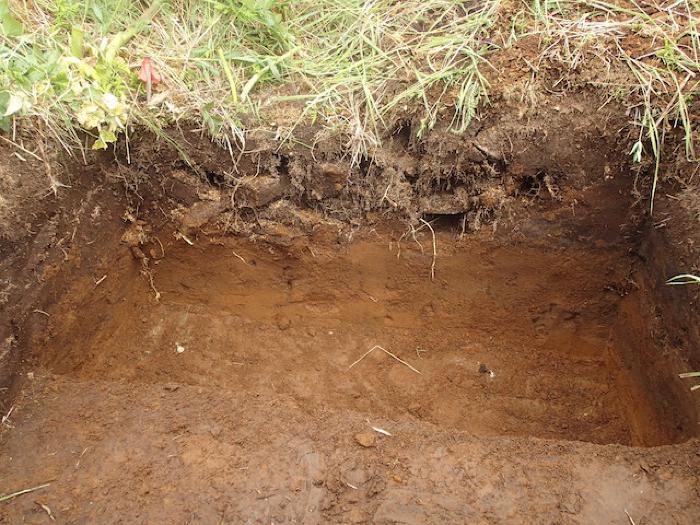Dirt — Iqaq

The soils in the Kodiak region are relatively young, formed since the end of the last ice age less than twelve thousand years ago. Deposits of volcanic ash brought to the archipelago by the wind and the weathering of bedrock and glacial deposits are the main sources of soil. Although there are a variety of different soils, reflecting regional differences in precipitation, vegetation, and topography, most of Kodiak’s dirt can be classified as a silt loam. This reddish-brown earth ranges from one to two feet thick and contains large amounts of organic material. In the wet environment, however, rain removes many of the soil’s nutrients. Water leaches out the soluble minerals, creating wet, acidic earth.
For Alutiiq people, this thick mantle of dirt provided a perfect foundation for houses. They created the walls and floors of structures by excavating through the soil into glacial gravels below. Digging was done with sturdy, pointed, sea mammal ribs and shovels made by tying a sea mammal scapula to a wooden handle. Builders piled the earth removed from these excavations along the outer walls and roofs of their houses to create warm, weather-resistant structures. The practice of building houses partially underground is at least five thousand years old and perhaps older. Some of the oldest houses, built before there were substantial accumulations of dirt to dig down into, appear to have been made by piling up blocks of sod.
